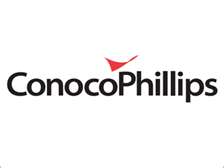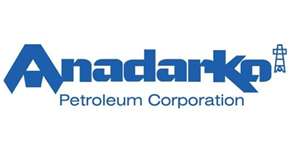 As part of its recent initiative to provide the data behind its widely followed market analysis and price forecasts, PIRA Energy Group has launched the World Oil Supply Data Portal, (WOS) Available only via PIRA’s client site, WOS reflects the 30-plus years of PIRA forecast modeling of country-by-country and, at times, field-by-field supply data. The results of this bottom-up analysis, when combined with PIRA’s similarly detailed work for by-country and by-sector demand, provides the foundation for PIRA’s oil balances and price forecasts that are relied on by more the 500 client companies worldwide.
As part of its recent initiative to provide the data behind its widely followed market analysis and price forecasts, PIRA Energy Group has launched the World Oil Supply Data Portal, (WOS) Available only via PIRA’s client site, WOS reflects the 30-plus years of PIRA forecast modeling of country-by-country and, at times, field-by-field supply data. The results of this bottom-up analysis, when combined with PIRA’s similarly detailed work for by-country and by-sector demand, provides the foundation for PIRA’s oil balances and price forecasts that are relied on by more the 500 client companies worldwide.
With the world now in the midst of a major evolution in oil supply, the timing of the WOS’s launch is particularly important. Markets in North America will increasingly be supplied by new local sources, and oil previously destined for North America from abroad will be seeking new markets in Asia and elsewhere. For instance, U.S. liquids production has grown from 9.5 MMB/D in the second quarter of 2010 to 12 MMB/D currently, with 1.8 MMB/D of that increase coming from relatively light, sweet shale crude production and the remainder primarily from shale NGLs. This higher production has led to a reduction in imports of 2 MMB/D, with largest portion of the reduction to date in African grades. PIRA anticipates that the growth in U.S. crude production will continue, albeit at a slowing rate, changing the global crude mix to one that is both lighter on average and less dependent on OPEC. Understanding the specifics of how this will evolve makes a resource like WOS critical to commercial success in refining, crude transport and maximizing the value of crude sales.
The Portal’s customized interface allows users to quickly access PIRA's latest world liquids supply forecast (annually to 2030 and monthly to end 2014), including assumptions on disruptions, maintenance, and spare capacity. The data can be viewed and organized for any geographical split, from world or regional totals all the way to U.S. states and Canadian provinces, and even to specific plays where available.
“What makes the Portal truly special is that it goes beyond understanding and displaying volumes,” notes Gary Ross, PIRA’s CEO. “Its critical advantage is how it allows users to delve quickly into specific components of liquids supply — conventional, nonconventional; onshore or offshore; shale or non-shale. WOS enables the user to drill down, so to speak, to specific types of liquids, not just crude or condensates. Details on NGLs, biodiesel and ethanol, GTLs and CTLs, syncrude and so on are all just a click or two away.”
Another unique aspect of the Portal is the ability to view crude and condensate production forecasts by quality (light sweet, medium sweet, heavy sweet, light sour, medium sour, heavy sour). Users are further empowered to customize their output by establishing specific value ranges for API, sulfur, TAN, and 650+ content in order to generate a report that contains only the specific grade of crude they need. This could be particularly valuable to a refiner seeking the best source of supply or a producer assessing its most direct competition.
Dr. Ross adds, “As a reflection of PIRA itself, where all of its information services come with high degree of value-added analysis, WOS is more than a collection of data presented in an easy-to-access interface. It comes with our team of seasoned analysts who understand the limitations of source data and work to normalize the various streams. Anticipating and quantifying disruptions is another key element of accurately forecasting supply. WOS inputs take into account all types of disruptions in production, including weather, technical problems, sabotage, sanctions, and other politically driven outages.”
Field start-ups are equally important to gauging future production. WOS’s “Production by Vintage” reports reveal which projects are scheduled to begin production in a particular year (or range of years) and show the behavior of those fields over time in PIRA’s forecast.
PIRA Energy Group, founded in 1976, is a preeminent energy information provider specializing in global energy markets research, analysis, and intelligence. PIRA offers primarily Retainer Client Services, but also can perform customized consulting, on a broad range of subjects in the international crude oil (and NGLs), refined products, natural gas (and LNG), electricity, coal, biofuels, shipping and emissions markets. Currently, more than 500 entities spread across some 60 countries — including international and national integrated oil and gas companies, independent producers, refiners, marketers, oil and gas pipelines, electric and gas utilities, industrials, trading companies, financial institutions and government agencies — use PIRA’s research and price forecasting services.
.


 NYC-based
NYC-based 
 ConocoPhillips
ConocoPhillips Cal Dive International, Inc
Cal Dive International, Inc NYC-based
NYC-based 

 Apache Corporation
Apache Corporation The Ferguson Group,
The Ferguson Group,